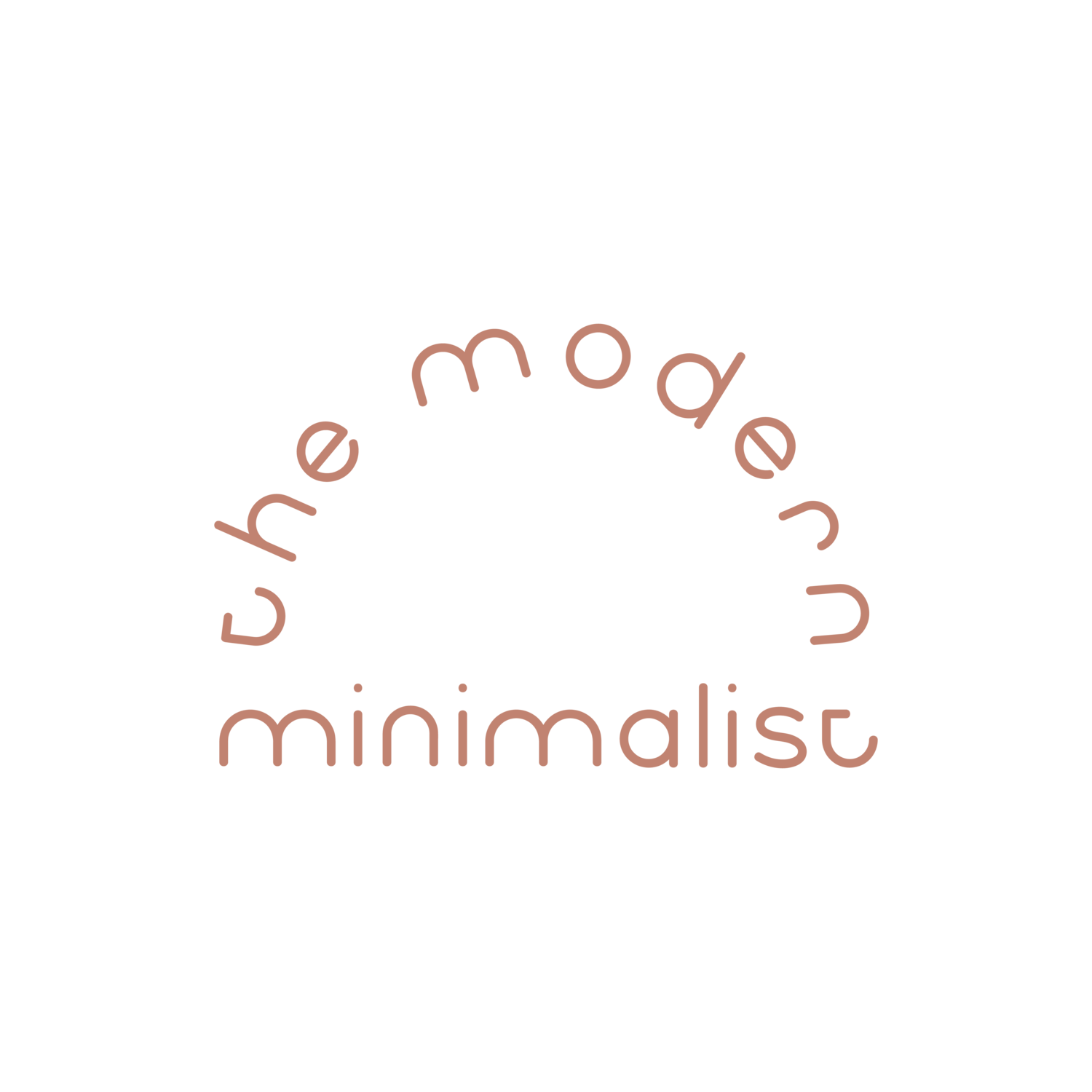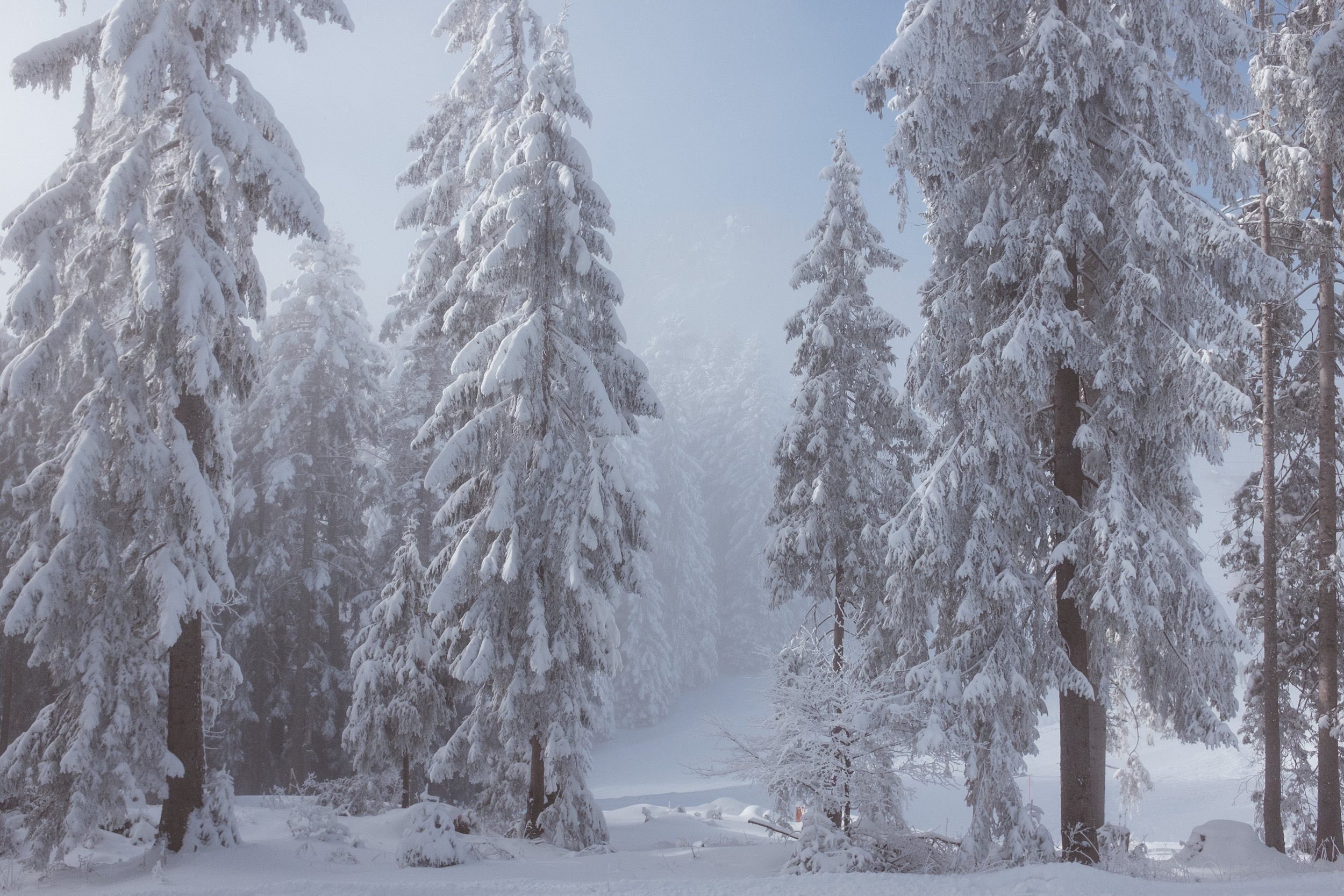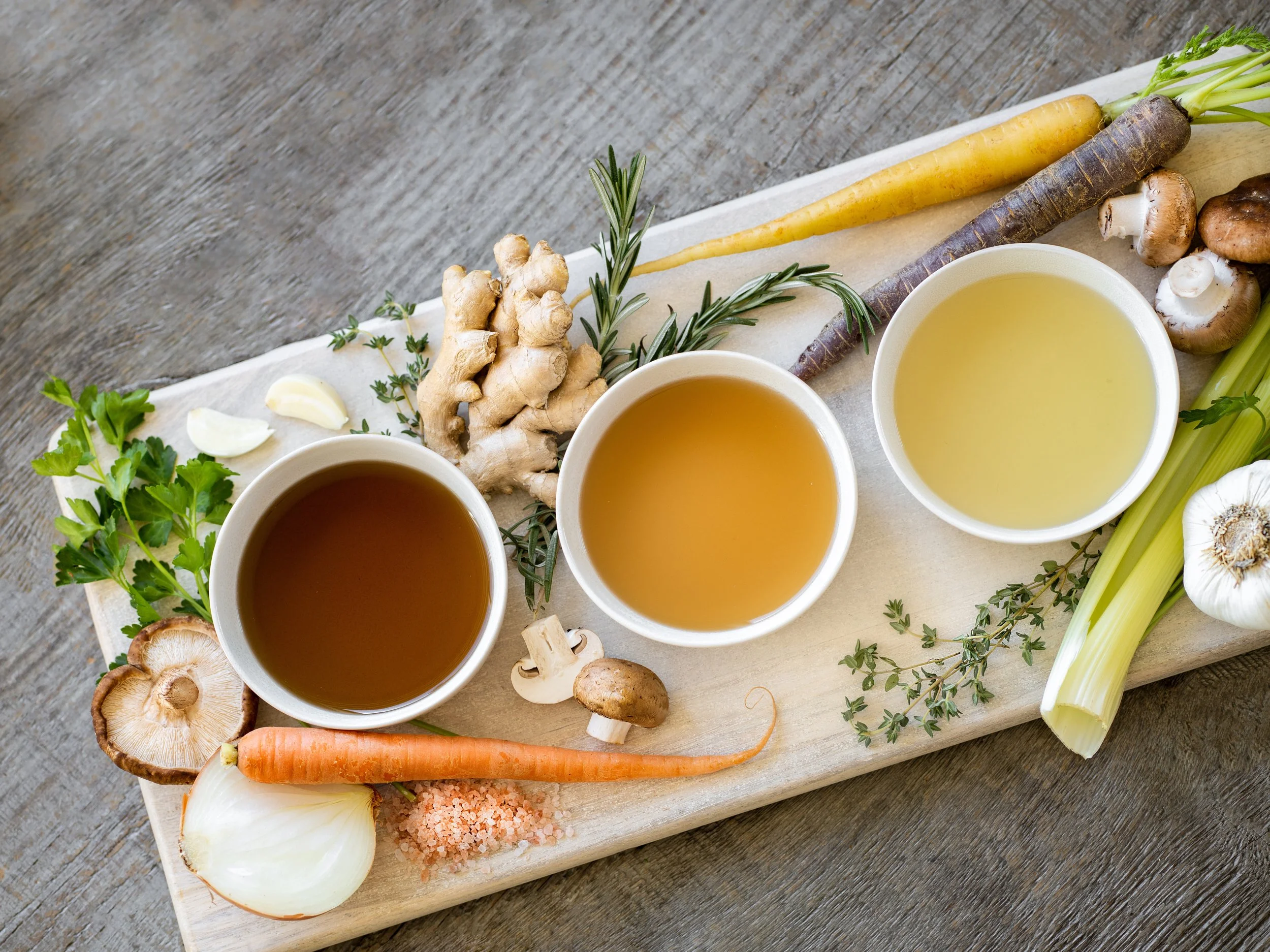8 ways to minimize the winter blues
8 Ways to Minimize the Winter Blues
For many of us, winter is either our favorite season of all or the most dreaded time of the year—there seems to be no in-between.
But even those of us who do enjoy winter (myself included!) often feel more down than usual thanks to the cold weather, reduced amount of sunlight, less time outdoors, and stress of the holiday season.
Let’s talk about where the winter blues come from and explore ways you can nourish your mind, body, and soul during these more challenging months of the year.
why do we get so down during the winter months?
Wintertime can easily leave you feeling off-kilter. With winter usually comes less sunlight, altered daily routines, poor diet, holiday stressors, and the inevitable comedown when the holidays are over.
But many of us suffer from more intense mental health symptoms during the winter months due to a condition known as seasonal affective disorder (also known as SAD or SAD disorder).
SAD is a form of depression that occurs around the same time each year. Most people experience “winter depression” from fall to spring or summer, though some have “summer SAD” from spring or summer to fall or winter.
Symptoms of depression, and SAD in particular, include:
Feelings of sadness or being “down” for most of the day, almost every day
Loss of interest in activities
Low energy and feelings of tiredness
Oversleeping
Overeating, craving carbohydrates, or weight gain
Difficulty concentrating
Feelings of hopelessness, worthlessness, or guilt
Suicidal ideation
Those with major depression or bipolar disorder are more likely to suffer from SAD, and SAD is more common in the northern part of the world due to the north’s shorter winter days.
As of 2022, Oregon had a higher rate of depression than any other state—an alarming 25% of Oregonians experienced depression. And people who live in the Pacific Northwest are more likely to receive a major depression diagnosis than people in most other areas of the United States.
Light therapy, cognitive behavioral therapy (CBT), and antidepressant medication can all help with seasonal depression, as can getting outdoors and taking supplements such as Vitamin D.
I’ll explore some of these coping mechanisms and more below.
8 ways to keep the winter blues at bay
It can be difficult to maintain self-care in the face of depression, SAD, or general feelings of lethargy. But I’ve found that many of the things that can help are fun and rejuvenating.
Please keep in mind that I am not a mental health professional, so these recommendations do not constitute mental health or medical advice and are not substitutes for therapy or medication. Even so, the following things have helped me minimize my winter blues.
Relax in a sauna
Saunas use dry heat and sometimes infrared lights to promote detoxification and relaxation. Saunas can be a welcome relief from cold weather and the hustle and bustle of daily life and have been a standard tradition in Scandinavia for hundreds of years.
Many gyms have saunas, but if you live in Portland, check out:
Loyly, a spa that offers public or private sessions in their cedar saunas as well as facials and massages.
Common Ground, a wellness cooperative with an outdoor soaking pool and silent sauna that also provides acupuncture, massages, chiropractic care, and more.
Soak at a spa
Water is incredibly healing, and indoor spas can be a great alternative to outdoor hot springs and swimming holes.
In addition to Common Ground, which I mentioned above, the following spas are great places to soak in the Portland area:
Knot Springs, a social club and spa with two hot tubs of varying temperatures, a cold plunge, a steam room, and a sauna, plus a balcony overlooking the Portland skyline and the famous White Stag sign. They also feature massages, facials, and other spa treatments.
The Society Hotel, a boutique hotel near Mt. Hood in Bingen, Washington that has a large soaking area with an indoor saltwater pool, outdoor hot pool, cold plunge pool, and cedar sauna.
Float in a sensory deprivation tank
I love a good sensory deprivation tank for my physical, mental, and emotional well-being. Float North is my favorite place to unplug and reset. Try a few floats to get the hang of it and consider bundling your float with a massage or sound therapy for peak relaxation.
Try an indoor workout
Physical activity can help reduce symptoms of SAD and boost your mood and energy levels. Indoor workouts are a great way to get exercise during the wintertime, especially if you live in a colder, darker climate.
Here are three types of indoor workouts to try this winter:
Indoor cycling
BurnCycle, my go-to Portland indoor cycling studio.
Yoga
YoYoYogi, a beautiful yoga studio in Portland’s Pearl District that offers all kinds of yoga classes, including hot yoga and restorative yoga.
FireLight Yoga, a North Portland yoga studio that hosts heated and unheated yoga classes ranging from gentle to power.
Yoga at home: Dealing with winter weather or simply not ready to take an in-person yoga class? Try setting up a mini yoga studio at home. Then, you can do some poses and meditation exercises you know, or follow along with a YouTube channel like Sanskriti Yoga.
Pilates
MegaBurn, a Pilates studio with small, high-intensity, Megaformer-based classes designed for students of all fitness levels.
Take a winter hike or other outdoor excursion
Another fun, mood-boosting way to get some physical activity—plus sunlight and fresh air—is to plan a winter hike or other outdoor adventure.
Some of my favorite outdoor things to do in and near Portland during the wintertime are:
Hiking in Forest Park or at Tamanawas Falls
Snowshoeing at Mirror Lake or Trillium Lake
Skiing at Mt. Hood Meadows or Mt. Bachelor
Make something in the kitchen
Cooking and making warm beverages are great ways to nourish yourself and your loved ones.
Infuse a little color into your winter days by cooking with rich, winter vegetables such as squash, carrots, cabbage, dark leafy greens, Brussels sprouts, potatoes, beets, turnips, and broccoli. You can incorporate vegetables like these into a stir fry, soup, or stew or simply roast them in a sheet pan.
You can also indulge in grounding foods like beans, lentils, ginger, garlic, and fermented foods such as kimchi and sauerkraut (which are rich with probiotics and can improve gut health and digestion as well as mental health).
For both meals and drinks, warming herbs and spices such as cardamom, cinnamon, cloves, and cumin can deliver antioxidants to your body, help with digestion, and potentially even lower your blood sugar. Spices like these go great with all kinds of dishes, not to mention herbal, green, and black teas, hot coffee drinks, and mulled wine.
One of my favorite winter treats is Glüwein, a German mulled wine. “Glüwein” means “glow wine” because it makes you feel like you are glowing from the inside out when you drink it during the cold winter months. It is the perfect way to (literally) spice up your regular table wine, plus it will make your home smell amazing!
Take supplements
Supplements can do wonders for your mental and physical health all year round, but some are even more necessary during the winter.
Vitamin D is an absolute must if you are getting less sunlight than usual, especially for those of us who live in darker climates like the Pacific Northwest.
Magnesium is also especially helpful to take during the winter. People’s magnesium levels tend to be lower in the winter than in the summer, and magnesium helps your body activate and metabolize vitamin D.
Finally, 5-HTP is a supplement that converts to serotonin. I take it during the wintertime to give my brain the extra boost it needs.
Make your home more hygge
Hygge is the Danish concept of slowing down to relax, enjoy life’s simple pleasures, and connect with your loved ones. A similar word in the Old Norse language meant “protected from the outside world”—this captures the heart of hygge.
While hygge principles are applicable all year round, they are especially helpful during the winter months. Denmark’s cold, dark winters are part of what brought the concept into practice in the first place—that and the Danes’ emphasis on equality and personal well-being.
Hygge and minimalist living are deeply intertwined as they each favor simplicity and a minimalist lifestyle and interior design sensibility. Here are some minimalistic ways to incorporate hygge into your home this winter:
Bring in soft design elements, such as faux fur rugs and pillows and textured, minimalist art.
Host a book club or potluck with your friends, family, and/or neighbors.
Combine different types of ambient light sources such as a tabletop lamp, rock salt lamp, sunrise alarm clock, and SAD lamp (one of the most effective seasonal affective disorder treatments).
Install dimmer switches if you use overhead lights.
Buy candles or, if you’re in the mood for a fun indoor activity, make your own.
Make a simmer pot by boiling ingredients in a few cups of water, turning the burner down to low, and adding water as needed. You can use ingredients like orange rinds, apple peels, rosemary, cinnamon sticks, cloves, vanilla bean, or vanilla extract.
Another great way to make your home more hygge this winter is to commit to becoming a minimalist and use your extra time indoors to declutter your space. Many people believe that having more things makes your home feel cozier, when in fact the opposite is usually true—studies have shown that clutter causes stress and anxiety. Winter is a great time to start decluttering and get rid of that extra stimulation once and for all.
Don’t know where to start? That’s where I come in! As a professional home organizer, I help people in Portland, Oregon and beyond create an intentional life through holistic home organizing and design.
Check out the services I offer and set up a complimentary consultation with me using this form. Or treat yourself to the modern minimalist method workbook for inspiration, journal prompts, exercises, and resources.
The winter blues may be inevitable, but they are not insurmountable
Whether you experience the winter blues from time to time or full-blown SAD like clockwork, taking the time to treat yourself and revitalize your energy can help you move past it.
We may not be able to recreate sunlight or stay warm 100% of the time. But we can find new ways to warm our bodies and stay physically and mentally active. And by making new traditions out of some of the activities and coping mechanisms I’ve described above, you may even find yourself looking forward to the winter season more and more with each passing year.




